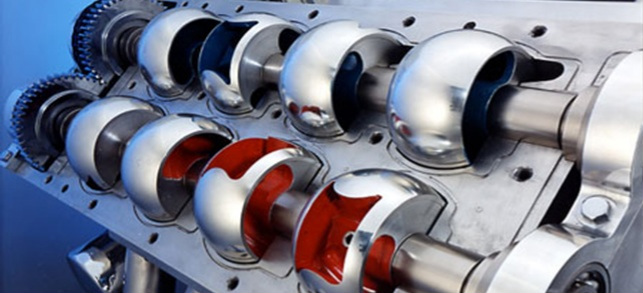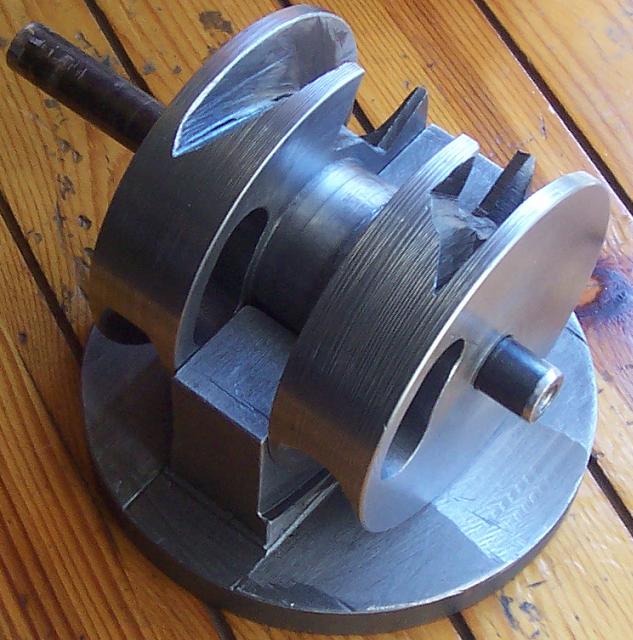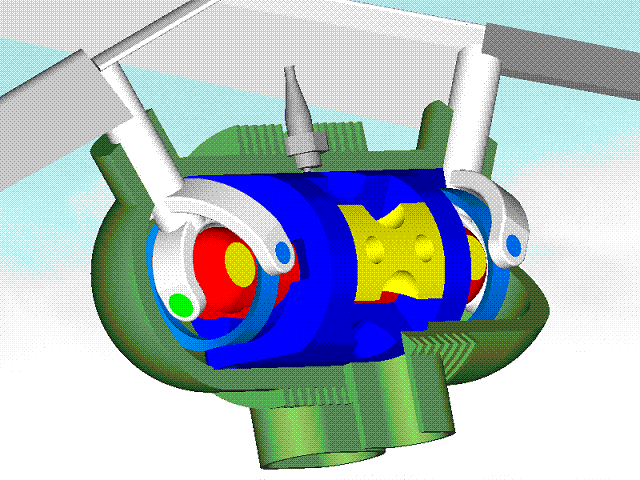Hello Husaberg.
You write:
“The rotary valve prototype is interesting not unlike the Coates and the Aussie (Deane) only done differently.
The prototype engine is fashioned/fabricated together in the manner of the Autounion f1 engines. Neat»
I don’t know what the Aussie (Deane) rotary valve is. If you mean the F1 Bishop / Cross rotary valve design, I know it. If you mean something else, please let me know.
The Coates spherical rotary valve and the Bishop rotary valve are substantially different than the PatRoVa.
Quote from
http://www.douglas-self.com/MUSEUM/P...aryValveIC.htm
For almost all its history, the preferred valve for the Internal Combustion engine has been the poppet type. (the etymology of the word "poppet" is an interesting study in itself, but a bit off-topic) There are good reasons for this; see the Appendix on the advantages of the poppet valve.
However, many inventors have been attracted by the apparent simplicity and the uniform motion of rotary valves of one kind or another. There is also the tempting prospect of being able to run on inferior fuels because there was no hot exhaust valve always present in the cylinder to trigger pre-ignition. However, as with both steam and IC rotary engines, the simplicity was more apparent than real, and the engineering problems were daunting.
The basic problem, is that the pressures in the cylinder of an internal combustion engine are high, due to both the compression stroke and the explosion of the fuel-air mixture. This produces large forces on the valve system, however it is contrived; the beauty of the poppet valve is that such forces simply push it harder against its seat, and have no effect at all on the valve-actuating mechanism.
However, the geometry of rotary valve systems is inherently different; in the Aspin concept below, the vertical valve cone is pushed up axially against the cylinder head, while the horizontal Cross valve is pressed up against the top half of the bearing surfaces. In both cases this can cause excessive friction and seizure, the root of the problem being that enormous forces are acting on the valve while it is moving.
End of quote
The abovementioned problem of the rotary valves is also a problem of the Coates
and of the Bishop
designs: the higher the pressure into the cylinder (imagine a heavily supercharged engine, or the rotary valve during ), the more the valve is pressed up against the cylinder head.
Think:
Does the PatRoVa rotary valve solve this long existing problem?
I say yes.
If you just leave the PatRoVa rotary valve on the cylinder head without any support by bearings, the valve stays there – unsupported – no matter how much pressure you put into the cylinder:
There are other advantages, too:
For instance, the Coates design has a hot exhaust port on the cylinder head (sealed by the red hot exhaust spherical rotary valve) and a cold intake port (sealed by the intake spherical rotary valve). This limits the compression ratio.
For instance, any leakage of compressed gas from the Coates exhaust port, goes to the exhaust, while any leakage of the PatRoVa is recycled and burns during the next combustion.
For instance, you can easily erase the PatRoVa rotary valve a few mm to change the timing / overlap.
Thoughts?
Objections?
Thanks
Manolis Pattakos





 Reply With Quote
Reply With Quote










Bookmarks